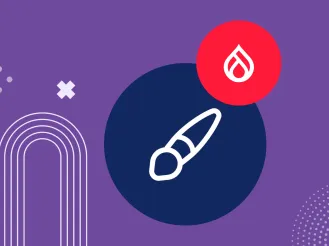Technology in Higher Education - 3 Trends to Watch For
In our weekly roundup of higher education notes and trends, you can usually count on three themes being discussed by the academic community: student demographics, budget constraints, and technology. In this post, we'll expand more on these themes by sharing some of our own insights, and we'll cover a few unique and emerging technology trends across higher education and technology.
Virtual Reality on the Horizon in Higher Education
As a web agency specializing in building high-end websites for colleges and universities, anything technology-related that has the potential to impact the sector is sure to get our attention. As a VP at our agency, imagine my enthusiasm when I read Inside Higher Ed’s article on virtual reality in the classroom! The technology is still in its infancy. As such, it’s oftentimes expensive to produce and procure, so it will likely be years before we see it make any kind of tangible impact in schools. That said, the potential it may have in the future on learning outcomes is significant.
Imagine complementing a history lesson with a virtual reality tour, or studying a rock formation in a geology class by seeing it in augmented reality. Expensive field trips? No need! Plug into virtual reality and tour the world right from your seat! Another hypothesized value will be the ability for a truly global classroom where virtual classes can meet “face to face” and work together on problem-solving. Technology has come a long way; I remember how excited the classroom would get when the teacher rolling in a bulky tubed TV meant we’d get to watch a grainy, severely outdated educational video. Kids today - they have no idea how lucky they are.
Machine Learning -- Adapting Content To Complex Higher Education Websites
In a previous blog post, we reviewed an interesting new trend in higher education where learning management systems were starting to predict student outcomes by their usage patterns. That particular article noted the stats that showed that the more a student logged into the system during the first week or two of classes, the higher the probability they would succeed in the class.
The concept of “machine learning” has been prevalently used in the commercial sector for years now, with trendsetters like Amazon and Facebook serving up product and advertising suggestions based on your purchase history, “likes” and what websites you’ve visited. But the application for higher education is just as promising.
As a specialized web agency that does most of our work for higher education institutions, we’ve been introducing machine learning or “personalization” concepts to our clients for some time now (if you want to read more about personalization in higher education, check out this blog post we published last year). Higher education websites are what we call “content complex,” meaning they have a large number of distinctly different visitor types (what the web industry calls “personas”) frequenting them. Prospective students, parents of prospective students, enrolled students, parents of enrolled students, faculty, and alumni is the best-case scenario; oftentimes our clients will have very different types of prospective students who require further segmentation (imagine international students vs. local). How does one landing page identify and speak to six unique types of visitors? Personalization technology, that’s how.
When used, web personalization technologies can log specific user criteria and attributes such as age, location, purchasing behaviors, social media, and more. With user attributes logged and indexed, businesses can deploy unique, adaptive content (even web pages) that are custom-tailored to individual users. A sophisticated personalization strategy will have a unique web experience for each type of persona where everything from the content, images, colors, and messaging has been tailored for them. As a person engages with the website, the technology “learns” more about what they are looking for and can serve up relevant content to them (just like Amazon suggests products to you based on your search and purchase history).
Of course, this level of personalization requires a complex and thorough content strategy that many institutions simply do not have (yet). We often recommend simpler ways of personalization such as explicitly asking the user when they arrive who they are as a starting point. This basic framework can be evolved as the content strategy of the website becomes more refined. ImageX believes that personalization will be the foundation of user experience on the web moving forward, much like responsiveness for a mobile experience is today. Getting started on this trend now will make future adaptations that much more efficient.
Native Mobile Apps
It seems like every organization has or wants to have a native app; in some cases for good reason, while others, not so much. If an organization has a customer base that needs to interact with a large and often complex data set or tasks on a frequent basis, a native app is likely a good idea.
Mobile banking on an app is a great example; the complexity of a banking website and the volume of content make the mobile experience cumbersome for specific interactions, such as paying bills or transferring money (what people generally refer to as “doing their banking”).
A banking app immerses the user in that specific set of tasks, with a light set of complementary content and features. The business case for higher education is, in our opinion, just as strong as it is for mobile banking.
The obvious use case for higher education is current students managing their courses. Class schedules, assignment submissions, reminders for upcoming deadlines or events, test score notifications, paying tuition; you get the point.
It wasn’t that long ago I was in University and the student portal my school had wasn’t even mobile responsive; if you couldn’t get to a desktop computer, you were in trouble. Another potential use case we parents here at ImageX often discuss is a parent app for those of us with children in post-secondary. Imagine if we could stay up to speed on children’s class schedules, assignments, and grades? Oh, the possibilities.



